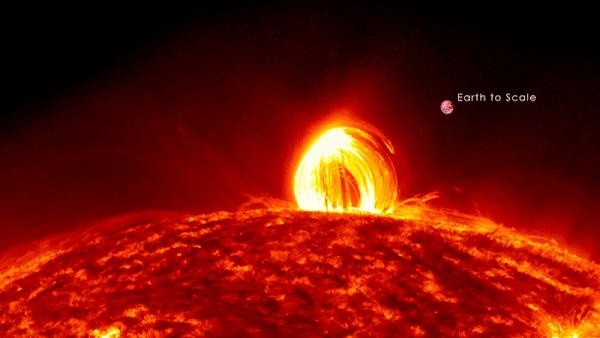China is getting ready to launch next year's first solar flight.
The mission, Advanced Space-based Solar Observatory (ASO-S), is expected for lift-off in the first half of 2022. On Thursday, Xinhua state news agency said it would "conduct 24-hour continuous monitoring" for at least four years, revolving 720 km (447 miles) above the Earth.

Gan Weiqun, the mission's chief scientist, told Xinhua that the probe would bring three important things to the Sun's space weather forecast. They would bring a magnetic detector, a solar telescope, and an X-ray imager to track the magnetic fields of the Sun and stormy activities.
Since the 1960s, more than 70 solar exploration satellites have been launched globally, and, according to the study, the project is expected to "plug China's gap in the field."
The probe will monitor solar storms 40 hours before their arrival. Such a move would promote early warnings of damage to the Earth's electromagnetic environment.
The two most violent eruptions that scientists say are from the magnetic field of the Sun are solar flares and coronal mass ejections.
Researchers have predicted that this year's solar activities will begin a new 11-year period and peak in 2024 and 2025. The Chinese mission is tracking this activity in detail.
According to NASA, satellite systems and communications were disrupted by a series of solar storms peaking in late October 2003. It resulted in spacecraft malfunctions and temporary shutdowns and triggering a power outage in Sweden.
About Solar Flare
The Sun's magnetic field goes through a cycle every 11 years or so, known as the Solar Cycle. The north poles of the Sun and the south poles swap positions and a series of solar storms erupt.
Giant eruptions carry powerful bursts of energy and material into space, which rise throughout the Solar Cycle. These actions affect the Earth's satellite systems and radio communications, with serious ones presenting, according to NASA, risks to electricity grids.
With the last solar cycle happening at the end of October 2003, the star will reach the next one soon. It is estimated that it will reach its peak radiation around 2025, Gan said, adding that the ASO-S might obtain comprehensive records of solar activities during its rise to peak years.
About Chinese Solar Mission
More than 70 satellites linked to solar observation have been globally launched since the 1960s. In 2011, the ASO-S software was first suggested and formally approved in 2017 by the CAS.
According to news published on the CAS website on January 13, prototype performances, including environmental and heat experiments, have been tested.
It is expected that the final product will be completed by the end of the year, it added.
In 2011, China's solar mission was first suggested and formally accepted in 2017 by the Chinese Academy of Sciences.
The Global Times newspaper reported that testing the spacecraft's prototype, including environmental and heat experiments, is expected to be completed by the end of January.
The Earth's atmosphere blocks most solar radiation, so scientists send probes into space to ensure a full picture.
In recent years, China has accelerated its space program. By 2030, it intends to land astronauts on the moon and finally set up a permanent research station on the south pole of the moon.
A probe will land on the planet in May on its first trip to Mars. A mission to bring rocks back from Mars by 2030 and explore Jupiter and its satellites is also part of its in-depth space exploration programme.
Check out more news and information on Space on Science Times.












